My
List |
Addition Date
|
Target
|
Mission
|
Instrument
|
Size
|

|
2024-08-08 |
|
NEOWISE
|
|
2784x2784x3 |
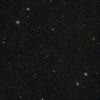
|
-
PIA26385:
-
NASA's NEOWISE Captures Final Image Moments Before End of Mission
Full Resolution:
TIFF
(17.92 MB)
JPEG
(782.4 kB)
|

|
2021-08-31 |
|
NEOWISE
|
|
360x360x3 |
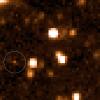
|
-
PIA24578:
-
An Accidental Discovery
Full Resolution:
TIFF
(256.6 kB)
JPEG
(15.79 kB)
|

|
2020-11-18 |
|
Galaxy Evolution Explorer (GALEX)
|
|
4791x2695x3 |
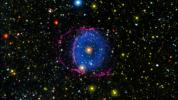
|
-
PIA23867:
-
The Blue Ring Nebula
Full Resolution:
TIFF
(26.12 MB)
JPEG
(761.9 kB)
|

|
2013-10-31 |
|
Galaxy Evolution Explorer (GALEX)
Wide-field Infrared Survey Explorer (WISE)
|
GALEX Telescope
WISE Telescope
|
1302x818x3 |
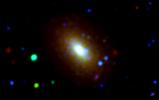
|
-
PIA17554:
-
Galaxies Grow from Inside Out
Full Resolution:
TIFF
(3.196 MB)
JPEG
(33.78 kB)
|

|
2013-10-30 |
|
Wide-field Infrared Survey Explorer (WISE)
|
WISE Telescope
|
9163x9163x3 |
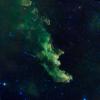
|
-
PIA17553:
-
'Witch Head' Brews Baby Stars
Full Resolution:
TIFF
(252 MB)
JPEG
(7.886 MB)
|

|
2013-08-21 |
|
Wide-field Infrared Survey Explorer (WISE)
|
|
5334x3000x3 |
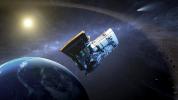
|
-
PIA17254:
-
NEOWISE: Back to Hunt More Asteroids (Artist Concept)
Full Resolution:
TIFF
(48.03 MB)
JPEG
(1.66 MB)
|

|
2013-08-21 |
Asteroid
|
Wide-field Infrared Survey Explorer (WISE)
|
WISE Telescope
|
1600x1600x3 |
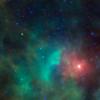
|
-
PIA17255:
-
Asteroid Zips By Orion
Full Resolution:
TIFF
(7.683 MB)
JPEG
(163.5 kB)
|

|
2013-03-11 |
|
Wide-field Infrared Survey Explorer (WISE)
|
WISE Telescope
|
2233x2236x3 |

|
-
PIA16872:
-
Two Brown Dwarfs in Our Backyard
Full Resolution:
TIFF
(14.99 MB)
JPEG
(190.2 kB)
|

|
2013-02-05 |
Orion
|
Wide-field Infrared Survey Explorer (WISE)
|
WISE Telescope
|
5401x5400x3 |

|
-
PIA16684:
-
The Cosmic Hearth
Full Resolution:
TIFF
(87.54 MB)
JPEG
(1.346 MB)
|

|
2012-12-06 |
|
Wide-field Infrared Survey Explorer (WISE)
|
|
3000x2000x3 |
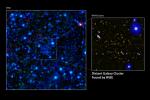
|
-
PIA16601:
-
WISE Finds a Galactic Metropolis
Full Resolution:
TIFF
(18.01 MB)
JPEG
(444.8 kB)
|

|
2012-07-02 |
|
Wide-field Infrared Survey Explorer (WISE)
|
WISE Telescope
|
5525x5535x3 |
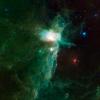
|
-
PIA15635:
-
A Different View of the Flame Nebula
Full Resolution:
TIFF
(91.79 MB)
JPEG
(1.767 MB)
|

|
2012-06-08 |
|
Wide-field Infrared Survey Explorer (WISE)
|
WISE Telescope
|
4000x2400x3 |
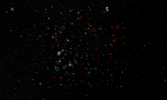
|
-
PIA15637:
-
Highlighting our Tiniest Neighbors

Full Resolution:
TIFF
(28.8 MB)
JPEG
(331.3 kB)
|

|
2012-05-16 |
|
Wide-field Infrared Survey Explorer (WISE)
|
WISE Telescope
|
2016x2016x3 |
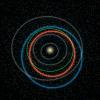
|
-
PIA15628:
-
The Hustle and Bustle of our Solar System
Full Resolution:
TIFF
(12.21 MB)
JPEG
(508.5 kB)
|

|
2012-05-16 |
|
Wide-field Infrared Survey Explorer (WISE)
|
WISE Telescope
|
4500x3375x3 |
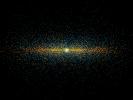
|
-
PIA15627:
-
Edge-on View of Near-Earth Asteroids
Full Resolution:
TIFF
(45.56 MB)
JPEG
(1.088 MB)
|

|
2012-04-26 |
|
Wide-field Infrared Survey Explorer (WISE)
|
IRAS
|
2240x2240x3 |
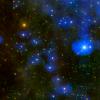
|
-
PIA15428:
-
Dusty Star Stands Out From the Rest
Full Resolution:
TIFF
(15.07 MB)
JPEG
(265 kB)
|

|
2012-04-12 |
|
Wide-field Infrared Survey Explorer (WISE)
|
WISE Telescope
|
3150x3150x3 |
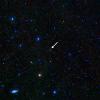
|
-
PIA15424:
-
Lone Blazar
Full Resolution:
TIFF
(29.77 MB)
JPEG
(981.1 kB)
|

|
2012-03-14 |
|
Wide-field Infrared Survey Explorer (WISE)
|
WISE Telescope
|
10000x5000x3 |
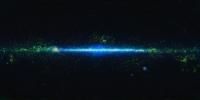
|
-
PIA15482:
-
Mapping the Infrared Universe: The Entire WISE Sky -- Rectangular Format
Full Resolution:
TIFF
(150 MB)
JPEG
(7.365 MB)
|

|
2012-03-14 |
|
Wide-field Infrared Survey Explorer (WISE)
|
WISE Telescope
|
10000x5030x3 |
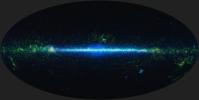
|
-
PIA15481:
-
Mapping the Infrared Universe: The Entire WISE Sky
Full Resolution:
TIFF
(150.9 MB)
JPEG
(6.828 MB)
|

|
2012-03-14 |
|
Wide-field Infrared Survey Explorer (WISE)
|
WISE Telescope
|
5400x4500x3 |
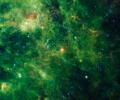
|
-
PIA15480:
-
Echoes of a Stellar Ending
Full Resolution:
TIFF
(72.9 MB)
JPEG
(2.817 MB)
|

|
2012-01-10 |
|
Wide-field Infrared Survey Explorer (WISE)
|
WISE Telescope
|
13530x4909x3 |
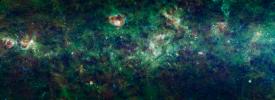
|
-
PIA15256:
-
A Royal Celebration
Full Resolution:
TIFF
(199.3 MB)
JPEG
(16.67 MB)
|

|
2011-11-25 |
|
Wide-field Infrared Survey Explorer (WISE)
|
WISE Telescope
|
11300x10500x3 |
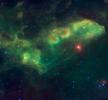
|
-
PIA14881:
-
Jabbah and Associates
Full Resolution:
TIFF
(356 MB)
JPEG
(5.949 MB)
|

|
2011-04-14 |
|
Wide-field Infrared Survey Explorer (WISE)
|
WISE Telescope
|
15800x14700x3 |
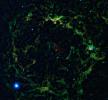
|
-
PIA14040:
-
Orion's Big Head Revealed in Infrared
Full Resolution:
TIFF
(696.8 MB)
JPEG
(24.25 MB)
|

 Planetary Data System
Planetary Data System


































